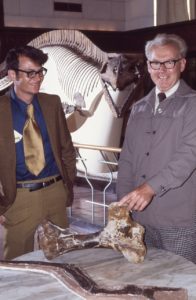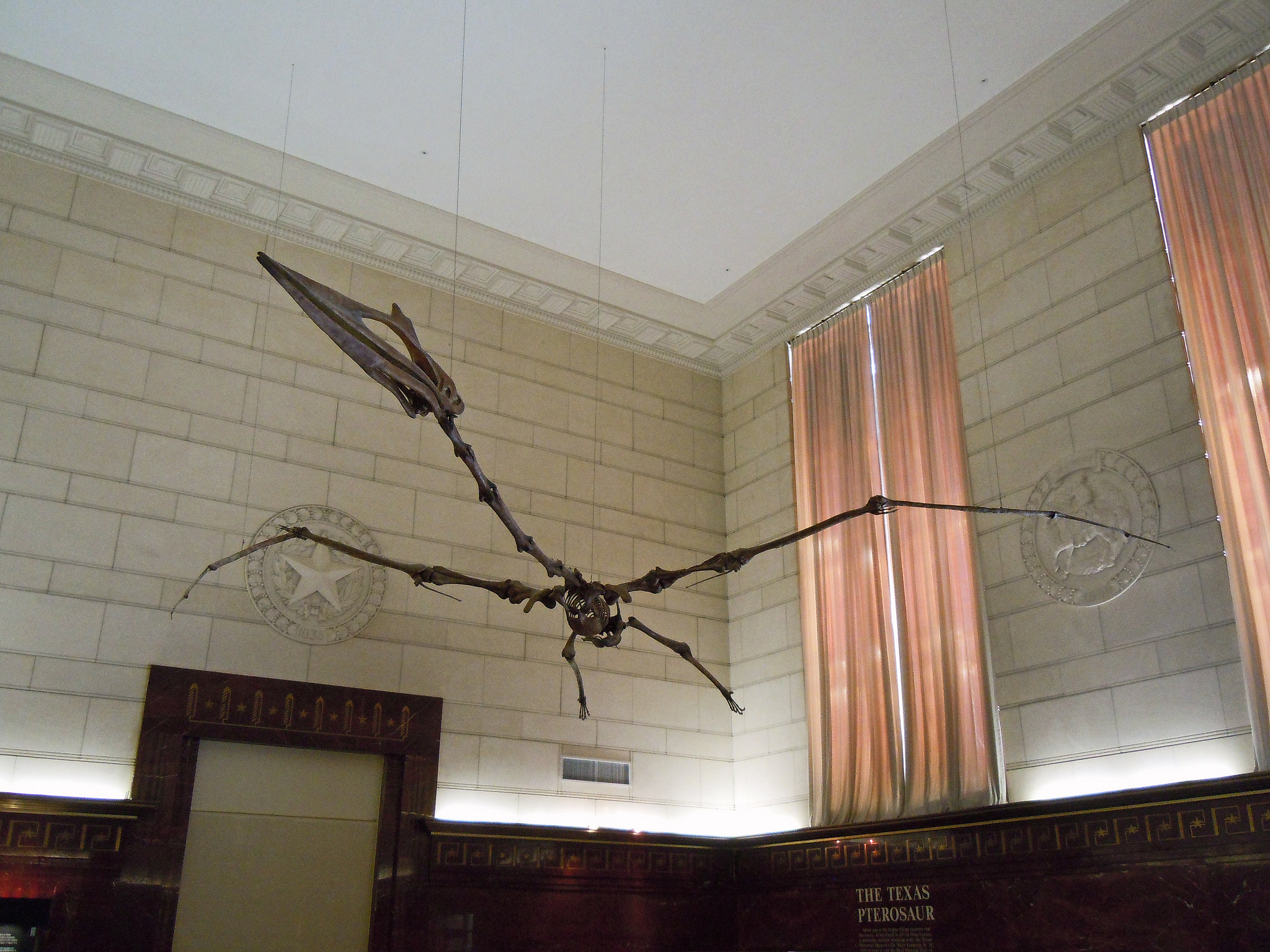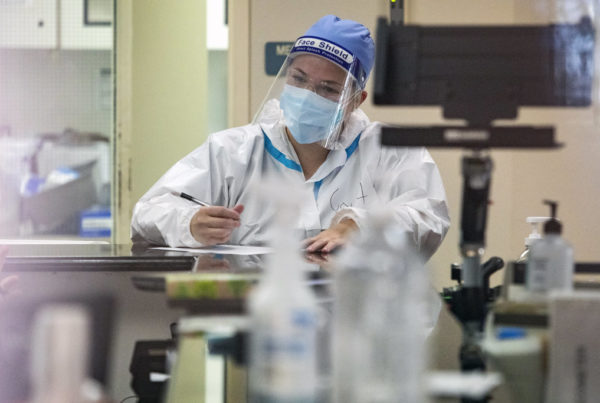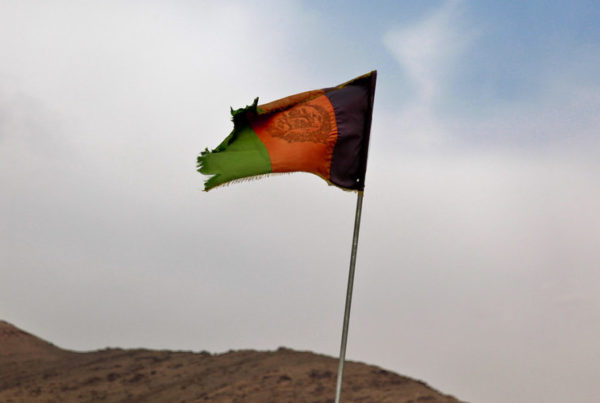This year marks 50 years since a 22-year-old University of Texas at Austin geology student discovered the fossil of a massive flying reptile creature in Big Bend National Park. Douglas Lawson named the creature “Quetzalcoatlus,” – a pterosaur belonging to the family of the largest flying reptiles ever to have existed on Earth.

Douglas Lawson (left) and his adviser and renowned paleontologist Wann Langston pose with a Quetzalcoatlus humerus. Courtesy Texas Memorial Museum
Lawson told Texas Standard that discovering it was a thrill; the first part he found was its gigantic wrist.
“Once I realized what it was, I knew we had a huge flying animal because [the wrist] is practically the size of a soccer ball!” Lawson said.
Today, a replica of Quetzalcoatlus’ skeleton resides at the Texas Memorial Museum on the UT-Austin campus. The museum was established in 1936, and Pamela Owen is its associate director. The university recently cut its funding for the museum, which has struggled during the pandemic. Despite the hardship, Owen still finds herself in awe when she looks at the fossil replica. She told Texas Standard it’s the first thing visitors see when they enter the museum’s great hall – “this gigantic skeleton overhead.”
At the time of its discovery, Quetzalcoatlus was thought to be the largest fossil of its kind. It belongs to a group of pterosaurs, a term Owen says comes from the Uzbek word for “dragon.”
“We’re looking at a wingspan of about 32 to maybe upwards of 36 feet,” she said, adding that it’s fitting such a large specimen was found in the Lone Star State. “It’s like everything’s bigger in Texas!”
Owen enjoys observing visitors who try to speculate about the dinosaur’s habits: How did it fly? What did it eat?
“The size itself is, you know, kind of awesome in terms of just making you wonder, and think scientifically,” she said.
Owen has some answers about its life. She says Quetzalcoatlus was most likely a land-dweller, with a lifestyle similar to that of a stork, or “a walking bird of prey.”
The fossil of Quetzalcoatlus has remained intact for millions of years, but the museum that showcases its magnificence is at risk. The museum lost revenue when it had to temporarily close down last year. That, plus UT’s recent announcement of budget cuts, has meant Owen will now rely on revenue from admissions and the gift shop, as well as financial gifts and grants, to stay afloat.
“Learning that the university cut our line item – that line item that dates back to 1936 … we were really disappointed,” she said. “And so, we are starting our next fiscal year with no funding from the university at all.”
This story has been updated to clarify that a replica of the Quetzalcoatlus fossil, not the actual fossil, is on display at the Texas Memorial Museum, and the fossil itself does not face any threat as a result of budget cuts at the museum.













